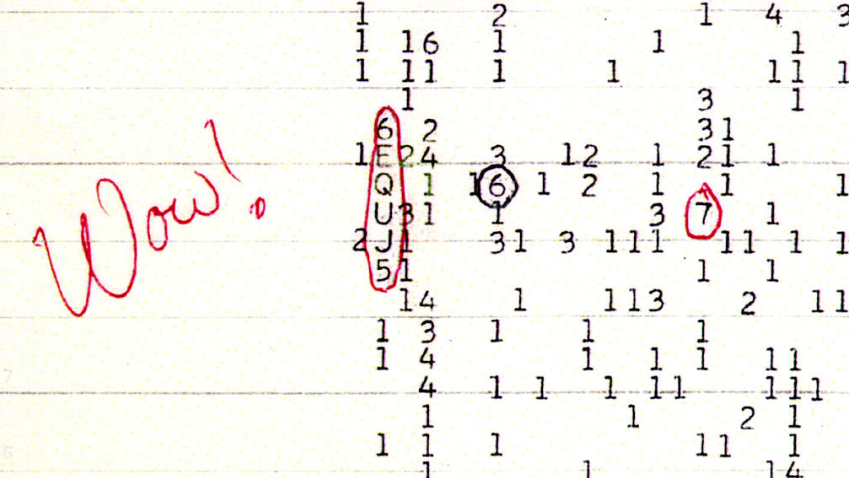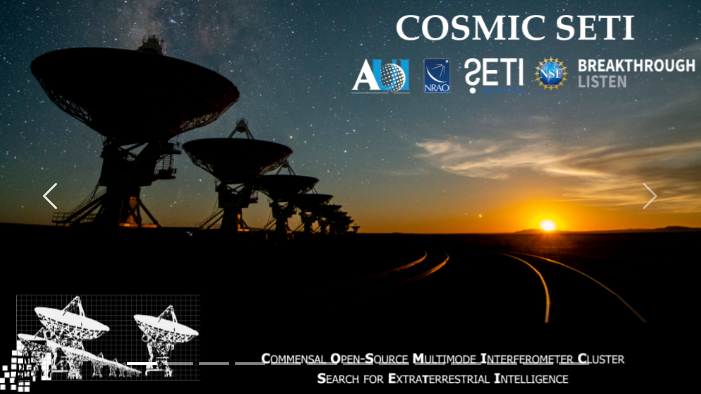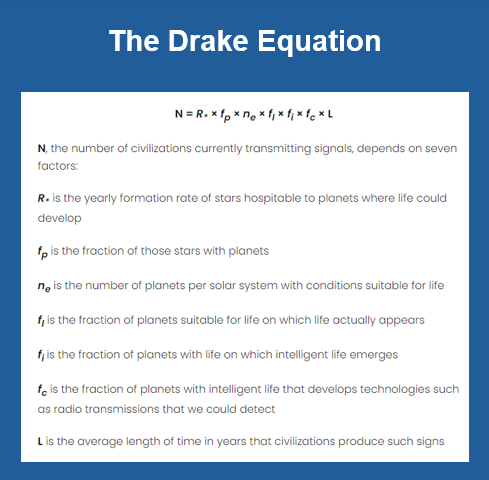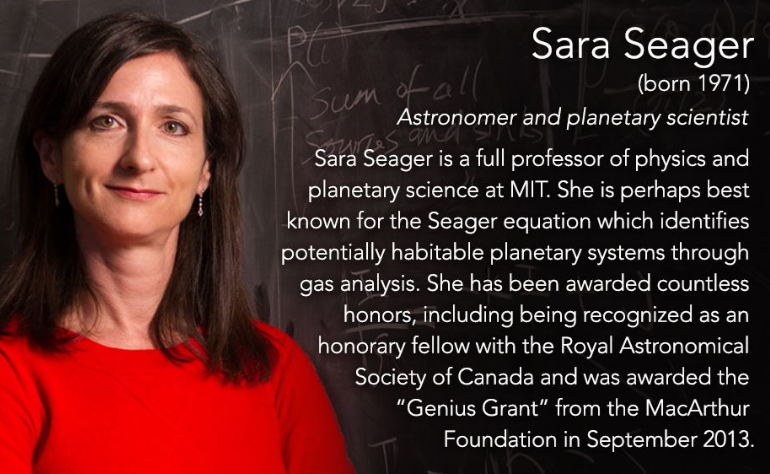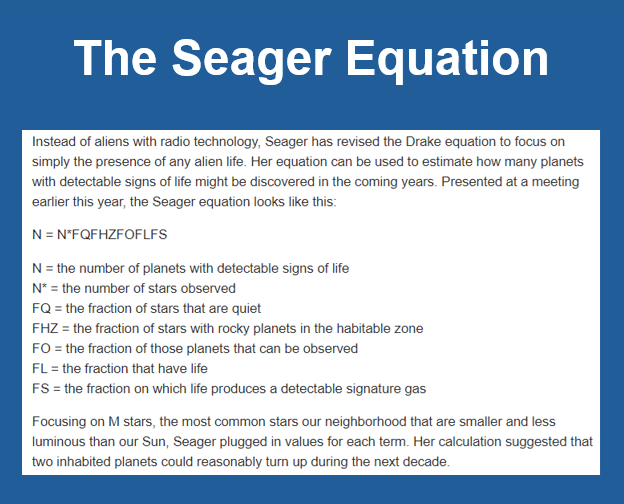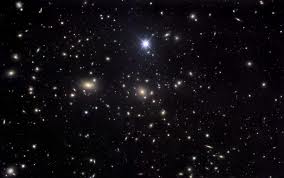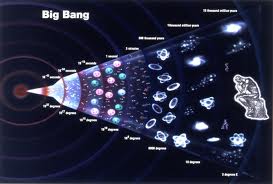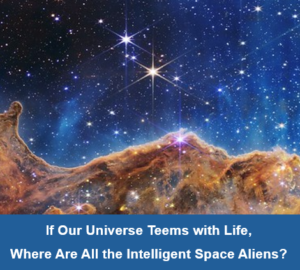 Our universe is mind-boggingly vast. The best estimates claim it’s about 92 billion light-years wide and around 13.82 billion years old. Cosmologists say there are trillions of galaxies holding quadrillions of stars, never mind quintillions of planets interwoven throughout the sky.
Our universe is mind-boggingly vast. The best estimates claim it’s about 92 billion light-years wide and around 13.82 billion years old. Cosmologists say there are trillions of galaxies holding quadrillions of stars, never mind quintillions of planets interwoven throughout the sky.
That’s a sextillion of combinations—exceeded only by the Avogadro’s number (6.02214076 × 1023) of mistakes I’ve made during 68 revolutions around the sun. Seriously, though, principles like the Fermi Paradox and the Drake Equation assure us that biological life exists elsewhere in the universe, but there may not be much “intelligent” life out there. That conclusion is supported by the space-breaking astrobiology work of Professor Sara Seager with her thought-leading, biosignature model of hunting out exoplanets containing extraterrestrial life.
Fermi? Drake? Seager? Who are these guys? What do they know about extraterrestrial bio-lifeforms in relation to your Earthly place in the universe? And where are they—these intelligent space aliens—that astrophysical calculators say have to exist?
Maybe it depends on your definition of life and intelligence. We’ll get to that in a moment. First, let’s look at the history of Search for Extra Terrestrial Intelligence (SETI) programs and two recorded, unexplained, electromagnetic contacts that just may have been sent by ET.
Starting the Search for Extra Terrestrial Intelligence
SETI began more as an amusement than a serious scientific venture. In August 1924, a natural celestial event coincided with an advancement in human technology. Mars was in its closest orbit with Earth—a condition called an opposition—and it attracted a lot of astronomical interest, even with amateurs now equipped with rather sophisticated telescopes.
Radio transmitters and receivers had enormously increased in output power and input sensitivity. David Peck Todd, an American astronomer, had been experimenting with the new SE950 radio which was invented at the end of World War I. It never saw active service and was now surplus to the civilian market. Todd and Charles Francis Jenkins, a photographer and inventor, teamed up to point the radio at Mars and record if anything returned.
This experiment interested the U.S. Naval Observatory in Washington that offered a Navy observation dirigible (airship) to take the SE950 antenna two miles into the sky so it would have less impact from terrestrial interference. They pointed the antenna at Mars, and what they found shocked the world.
The radio’s receiver was connected to a graph which recorded a repetitive series of dots and dashes somewhat like Morse Code. When printed on paper, the code became a human face. The signal from Mars suddenly stopped and was never heard again.
Sensing human interference or even a prank, Todd and Jenkins had their experiment reviewed by Nikola Tesla and Guglielmo Marconi. These two pioneers of electricity and radio dismissed the human element, verified the signal as real, but suggested it didn’t necessarily originate on Mars. They surmised the message possibly came from the same region of the sky but much further out.
The “Mars Face” ignited a century-long search for alien intelligence. It also created the overall space race which resulted in Sputnik, Apollo Eleven, and the poor saps currently marooned on the International Space Station caused by a broken Boeing rocket. It also funded exponential generations of publicly and privately funded SETI projects.
One venture, the Ohio State SETI Big Ear program, paid off on August 15, 1977. Jerry Ehman, a project volunteer, was shifting through signal records and spotted an abnormality that fit perfectly with a technological output—not something that could possibly originate in nature.
The signal arrived in the frequency of hydrogen atoms which is the common denominator researchers monitored. The reason being is that hydrogen might be the universal frequency used among advanced civilizations for interstellar communication. The signal’s imprint was 6EQUJ5 which means SFA to you and me, but to a trained eye like Ehman’s it was so outstanding that he wrote “WOW!” beside it in bold red letters.
The WOW! signal needs a bit of explaining to understand its relevancy. In SETI-speak, the signal started out at an intensity of 6—already an outlier on the page—climbed to E, then to Q, peaked at U—the highest power ever recorded by any SETI search— then decreased in equilibrium through J and signed off at 5.
This signal invigorated the SETI industry and still drives it today. Most researchers and learned scientists feel WOW! remains the strongest candidate for an intentional alien transmition. Alas, the signal was never recorded again but has no reasonable earthly or natural explanation.
The SETI experiment from 1960 onward is so comprehensive that entire books have been written documenting the process. And the fascination hasn’t waned despite hiccups in funding. Today, in 2024, there is a hyperdrive movement in SETI experiments with an alliance between the Breakthrough Listen and National Radio Astronomy Observatory (NRAO) at the Very Large Array in New Mexico.
The new venture’s name is COSMIC which stands for Commensal Open-Source Multicode Interferometer Cluster. (Someone really had to work to come up with that acronym.) COSMIC is AI-powered by supercomputers and will be able to process billions of intercepts in real-time, not like in 1977 when the WOW! signal surfaced days after transmission/reception.
The Drake Equation
1960 was a pivotal year for SETI expansion. David Drake was a young astronomer attached to Project OZMA at the NRAO Howard Tatel telescope in Green Bank, West Virginia. Drake was a brilliant man who looked for simple solutions to complex problems. He was invited to present at the National Academy of Sciences about the current state of SETI exploration.
Drake knew he was going to get the “What’s the chances” question, so he sat down and tried to figure it out mathematically. The answer being an estimate of the number of active, communicative, extraterrestrial civilizations in our Milky Way galaxy. (Note: All SETI explorations focus solely on the Milky Way, not distant galaxies.)
David Drake considered factors such as the rate of star formation, the fraction of stars that could have planets, the number of planets that could support Earth-like life, the fraction that develop intelligent life, the number of societies that have reached technological advancement to communicate interstellarly, and the number that have survive to be currently active. His equation gave the answer of 23. See screenshot below:
The Drake Equation is still the gold standard that drives SETI credibility. It’s a formula taught at the beginning of every Astronomy 101 course and is considered the second most famous scientific equation besides E=MC2.
The Fermi Paradox
So, if David Drake is right, and there are 23 Milky Way civilizations capable of communicating with us, why don’t we hear from them? Where are all the intelligent space aliens? This question is the Fermi Paradox.
In 1950, Italian physicist Enrico Fermi was working on an offshoot of the Manhattan Project where they were building a civilian nuclear reactor. He was having lunch with colleagues when he suddenly blurted out, “Where are they? Where is everybody?”
His associates looked at Fermi as if he had two heads until he qualified with, “I mean the aliens. If the universe is teeming with life and there are intelligent beings out there, where are they? Why haven’t we seen or heard evidence of them?”
Fermi had a good point. If Drake is correct, and there are 23 societies outside of Earth, why haven’t we seen or heard evidence of them? Set aside the two strong candidates from 1924 and 1977. It’s a paradox. If they exist, why don’t they show themselves as we here on Earth so desperately do?
In SETI-speak, the Fermi Paradox is “The Great Silence”. The paradox expands the contradiction with possible explanations:
- The Vastness of the Universe minimizes the chances of contact.
- The Age of the Universe limits civilization lifespan to coexist at the same time.
- The Rare Earth Hypothesis says that intelligent life is exceedingly rare.
- The Great Filter says that advanced societies are filtered out by natural forces.
- Technological Self-Destruction eliminates complex civilizations.
- Intentional Invisibility says these alien intelligences don’t want outside contact.
- The Zoo Hypothesis posits that aliens are very much aware of us and watch.
- The Simulation Hypothesis questions if we are a programmed simulation.
- The Dark Forest Hypothesis says they’re there; we just can’t see them.
- The North Sentinel Language Hypothesis claims we’re unable to understand them.
Stephen Webb wrote an interesting book titled If the Universe Is Teeming with Aliens … WHERE IS EVERYBODY? Seventy-Five Solutions to the Fermi Paradox and the Problem of Extraterrestrial Life. Some of Webb’s suggestions are pretty far out, but it’s worth the read if you really want to think out the Fermi Paradox.
The Sara Seager Answer
Someone who really has thought out the Drake Equation and the Fermi Paradox is Professor Sara Seager. She’s the uber-bright, planet-hunting, astrobiologist at the Massachusetts Institute of Technology (MIT) where she uses the new James Webb telescope to identify exoplanets with Earth-like conditions. So far, Seager has found over 5,000 probables in pretty much every place she’s looked.
Professor Seager is convinced the universe is teeming with life—biological life—not necessarily intelligent life capable of signaling. She suggests the SETI folks are looking at this wrong. Rather than randomly look for radio technosignatures, searches should be zooming in on biosignatures to find out first if life is there and then scan for intelligent emissions.
Seager and her team look for the chemical signs of oxygen, hydrogen, and methane coming from exoplanets. These are the primary indicators of carbon-based life, and they seem to be exceedingly common in the Goldilocks Zone which is the right distance from the host star to allow liquid water. Seager’s approach is to first find the life, then listen to hear if it has anything to say.
Sara Seager has rewritten the Drake Equation for a more modern approach. Her conservative calculation is that we’ll find at least two inhabited planets within the next ten years. “It’s only a matter of when,” Seager says. “Not if.”
Then it’s a matter of asking, “If our universe teems with life, where are all the intelligent space aliens?”



